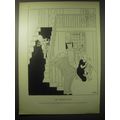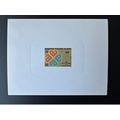Annanba (Bone or Bona), Algeria - Place de la Libertie - postcard c.1920s
- Condition : Used
- Dispatch : 2 Days
- Brand : None
- ID# : 182885302
- Quantity : 1 item
- Views : 116
- Location : United Kingdom

- Seller : justthebook (+1703)
- Barcode : None
- Start : Thu 27 Jun 2019 00:11:47 (BST)
- Close : Run Until Sold
- Remain : Run Until Sold
More Listings from This Seller view all
Seller's Description
- Postcard
- Picture / Image: Bone (Constantine) - [now known as Annaba, Algeria] - Place de la Liberte
- Publisher: Macon
- Postally used: no
- Stamp: n/a
- Postmark(s): n/a
- Sent to: n/a
- Notes / condition:
Please ask if you need any other information and I will do the best I can to answer.
Image may be low res for illustrative purposes - if you need a higher definition image then please contact me and I may be able to send one. No cards have been trimmed (unless stated).
------------------------------------------------
Postage & Packing:
Postage and packing charge should be showing for your location (contact if not sure).
No additional charges for more than one postcard. You can buy as many postcards from me as you like and you will just pay the fee above once. Please wait for combined invoice. (If buying postcards with other things such as books, please contact or wait for invoice before paying).
Payment Methods:
UK - PayPal, Cheque (from UK bank) or postal order
Outside UK: PayPal ONLY (unless otherwise stated) please. NO non-UK currency checks or money orders (sorry).
NOTE: All postcards are sent in brand new stiffened envelopes which I have bought for the task. These are specially made to protect postcards and you may be able to re-use them. In addition there are other costs to sending so the above charge is not just for the stamp!
I will give a full refund if you are not fully satisfied with the postcard.
----------------------------------------------
Text from the free encyclopedia WIKIPEDIA may appear below to give a little background information (internal links may not work) :
*************
Annaba (Arabic: عنّابة lit "Jujube Town", Berber languages: Aânavaen),[2][3] formerly known as Bona, and then Bône, is a seaport city in the northeastern corner of Algeria, close to Tunisia. Annaba is close to the small Seybouse River, and it is in the Annaba Province. With a population of about 260,000 (2008),[1] Annaba is the fourth largest city in Algeria. It is a leading industrial center in eastern Algeria.[citation needed]
Annaba is a coastal city that underwent significant growth during the 20th Century. Annaba has a metropolitan area with a higher population density than the other metropolitan areas of the Algerian coastline, such as Oran and Algiers. Much of eastern and southern Algeria uses the services, equipment, and infrastructure of the Annaba. Economically, it is the center for various economic activities, such as industry, transportation, finance, and tourism.[4]
Present-day Annaba grew up on the site of Aphrodisium, the seaport of the Roman city Hippo Regius.[2] (The modern city has since expanded south over Hippo's ruins as well.) Its former names Bône[2] and Bona[5] derived from "Ubbo", a local form of the name Hippo.[2] Its informal name Balad al-Unnâb – "town of the jujubes" – derives from that abundance of that fruit in the region.
The area of Annaba has yielded evidence of very early human occupation at Ain el Hanech, near Saïda (circa 200,000 BC), including artifacts that show remarkable toolmaking craftsmanship. According to some sources, prehistoric Algeria was the site of the most advanced development of flake-tool techniques in the Middle Early Stone Age (Middle Paleolithic).
The Phoenicians settled in Annaba during the 14th century BC. Hippo Regiuswas a center of early Western Christianity, and it was the site of many Christian synods, one of which was a key site for the dissemination of the books of the New Testament. Augustine of Hippo was bishop here from 396 AD until his death in 430 AD.[6] The city was destroyed in the 5th century by the Vandals.[7] Vandals ruled the city until 534. Gelimer, the King of the Vandals and Alans from 530 to 534 AD, faced with the starvation of his followers and their children, and realizing he had no chance of regaining his kingdom of North Africa, surrendered to Flavius Belisarius, a general of the Byzantine Empire under Justinian I, at Bône.[8] Byzantines then ruled Hippona (Hippo's renamed name after 395) before the Umayyad conquest of North Africa in 699 AD. Later, Abbasids, Aghlabids, and Fatimids ruled Bona before the rise of the Zirids. It was relocated to its present place after flooding and Banu Hilal the ravages that occurred in 1033 during Hammadid rule. It was attacked by a Pisan and Genovesefleet in 1034 and was conquered by Kingdom of Sicily in 1153. The Almohads took it in 1160.
During the 11th century, the Banu Hilal, an Arab tribe living between the Nile and the Red Sea, settled in Tunisia, Tripolitania (western Libya) and Constantinois (eastern Algeria) which was the portion known as Annaba.
After the demise of the Almohads, the rule of the Hafsids began in Annaba in 1250. Hafsid rule was interrupted by brief occupations of Merinids and Castille (in 1360) and ended with that of the Zayyanids. Rule by the Ottoman Empire began in 1533, and that lasted until French occupation in 1832, excepting rule by the Spanish Empirebetween 1535 and 1540. The Barbary pirates also lived in Annaba from the 16th through 19th centuries.[7]
During the rule of France (empire and republics), this city was called Bône. It was one of the main French settlements, and it still has a sizeable minority of the "Pied-Noir". One notable pied-noir from Bône was General Alphonse Juin, a Marshal of France and then the Central European NATO Commander.
Construction was undertaken at Bône during 1856–69 to build a 80 hectares (200 acres) sheltered port to handle the iron ore from the Mokta el Hadid.[9] A short railroad line was built from the iron ore mine at Ain Mokra to the docks of Bône.[10] This railroad was opened in 1864, the first one to be built in Algeria.[11] Full-scale production or iron ore began in 1865.[12] Also in 1865, Emperor Napoleon III visited Algeria, including going to the mine and the city of Bône.[13]
In 1865, the mine produced 22,000 tons of iron ore, which increased to 255,000 tons in 1869. The ore was extracted from underground galleries, and then shipped from Bône to the French iron and steel works.[14] Before the mine was opened, Bône had just 10,000 inhabitants. By 1924, there were 41,000 people, and the port was being used to export phosphates, lead ore, and zinc ore, too.[15]
During World War II in 1943, Bône (Annaba) was an important goal of the U.S. Army and British Army in Operation Torch, advancing eastward from Morocco, Oran, and Algiers across North Africa. Bône was a crucial highway and sea location for the invasion of Tunisia, and thence the driving of the Axis Powers (Germany and Italy) out of Africa in May 1943.
Bône remained in Allied hands until the end of the war in 1945, and then it remained a part of French Algeria until the independence of Algeria in 1962.
Listing Information
| Listing Type | Gallery Listing |
| Listing ID# | 182885302 |
| Start Time | Thu 27 Jun 2019 00:11:47 (BST) |
| Close Time | Run Until Sold |
| Starting Bid | Fixed Price (no bidding) |
| Item Condition | Used |
| Bids | 0 |
| Views | 116 |
| Dispatch Time | 2 Days |
| Quantity | 1 |
| Location | United Kingdom |
| Auto Extend | No |



 for 1 item(s)
for 1 item(s)















